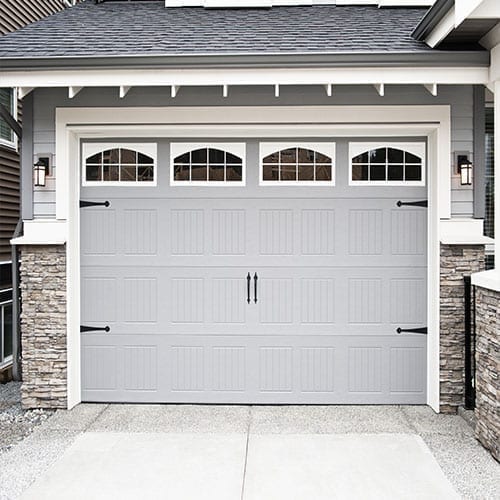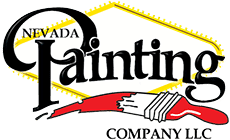
When to Paint Your Garage Door
You may think the most crucial factor of painting your garage door will be the color you choose. The color is a big consideration, however, you want your paint job to look good and last a long time. For that to happen you need to make sure you are painting under the right circumstances.
Painting your Garage door temperature
Paint can be temperamental when it comes to weather. Outdoor painting projects require optimum conditions for the best results. In this case, you do not want to paint when it is too warm outside or when it is too cold. If you do, you may end up with unexpected results.
The right temperature will yield a good-looking finished project. Cold is not usually an issue, but Nevada can get cold nights during this time of year. While the bitter cold temperatures our northern neighbors experience are very rare in our fair state, the nights can get cold enough to have an impact on your paint job. When the temperature is too cool, the paint takes longer to dry. Too cold and the paint may not dry at all.
Not all paints have the same drying properties. Oil-based paints should be used at temperatures above 45° F or 7° C. These types of paints will oxidize at a slower rate at lower temperatures. Solvents also evaporate at a slower rate in cooler temperatures. Since the curing rates are slower it may take a minimum of 24 hours of drying time before you can apply the second coat of paint.
Acrylic and latex paints need to be applied at slightly higher temperatures. They should be used at temperatures above 50° F or 10° C. At lower temperatures latex paints are subject to water spotting. Water-based paints can be ruined at freezing temperatures so be sure to check the weather report. You want at least 2 consecutive days of good temperatures for painting.
High temperatures (over 90° F for oil-based paint and 85° F for water-based paints) also cause problems. In this case, the paint may dry too fast. The heat causes problems with the paint binding. Results can be bumps and blisters in the paint. Cracks are common at elevated temperatures as well.
When Painting your garage door Stay Clear of Windy Days
Intuitively it may seem that a windy day would be a good day for painting your garage door. After all, the wind would help the paint dry faster. That is the problem. The paint may dry too fast on the top and the under layers would still be wet. This could cause blistering or cracking since evaporation for the underlayers would be greatly decreased.
Too Much Moisture is Not Your Friend
No one is going to paint in the rain. Fortunately, in Nevada the chances of rain coming during the time you plan on painting your garage door are slim. To be on the safe side, it never hurts to check the weather report. Rain is not the only moisture you need to be concerned about. Too much humidity can also cause issues with the paint.
The protective qualities in the paint can become compromised if you paint in high humidity. Moisture in the air may cause the surfactant to leach out. If you notice brown or white spots on the paint surface it indicates a moisture issue. As the paint dries, moisture gets into the film causing problems.
If you have a wooden garage door, moisture can be a significant problem. Wood surfaces tend to absorb moisture from the air. If the wood is not dry when you paint it, the paint may bubble. The moisture absorbed into the wood also makes it difficult for the paint to properly adhere to the surface. This can cause peeling.
Too much humidity affects the paint making it difficult to dry since the moisture in the paint cannot evaporate when it is high. Low temperatures and high humidity can cause condensation on the paint surface. This condition damages the paint and may keep it from adhering properly to the surface of the garage door.
The water in the paint must dry at least as fast, preferably faster than the solvents present. In high humidity, this does happen, and your paint becomes waterlogged. Under these circumstances, the paint becomes a gummy mess on the surface of the wood and will need to be removed and the surface prepped and repainted.
Ideally, the humidity should be between 40% and 50% when you are painting your garage door. This gives the optimum air moisture for well-calibrated drying time. Humidity above 85% will ruin your paint job.
Always check the manufacturer’s directions to get the best results. Newer technologies have improved paints. Depending on which paint you choose you may have some leeway with weather conditions. If you have questions or if you would like to save yourself time when painting your garage door, contact Nevada Painting Company and let our professional team take care of your painting job in the Las Vegas Areas. Call us today for more information or fill out our online form.
